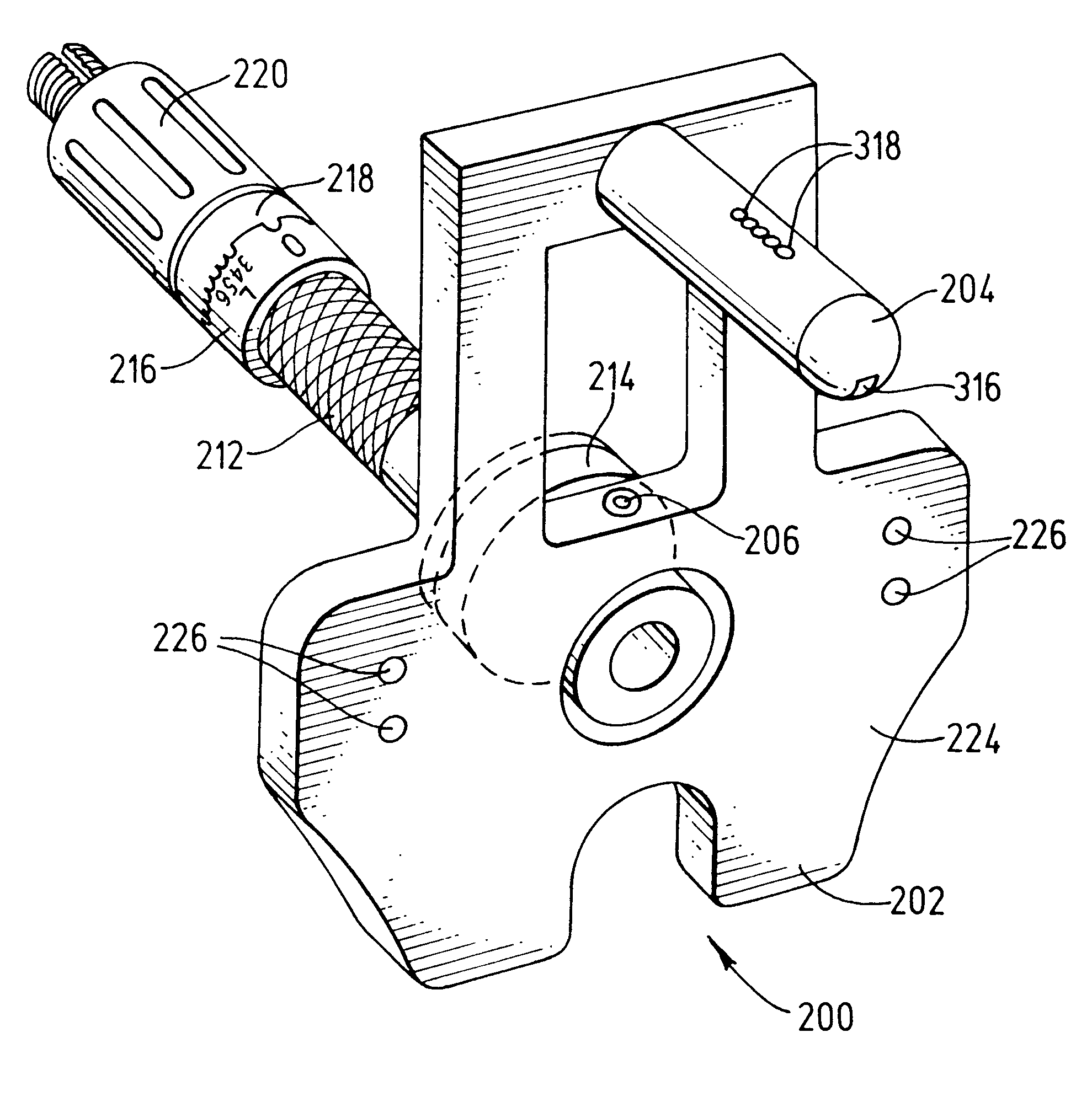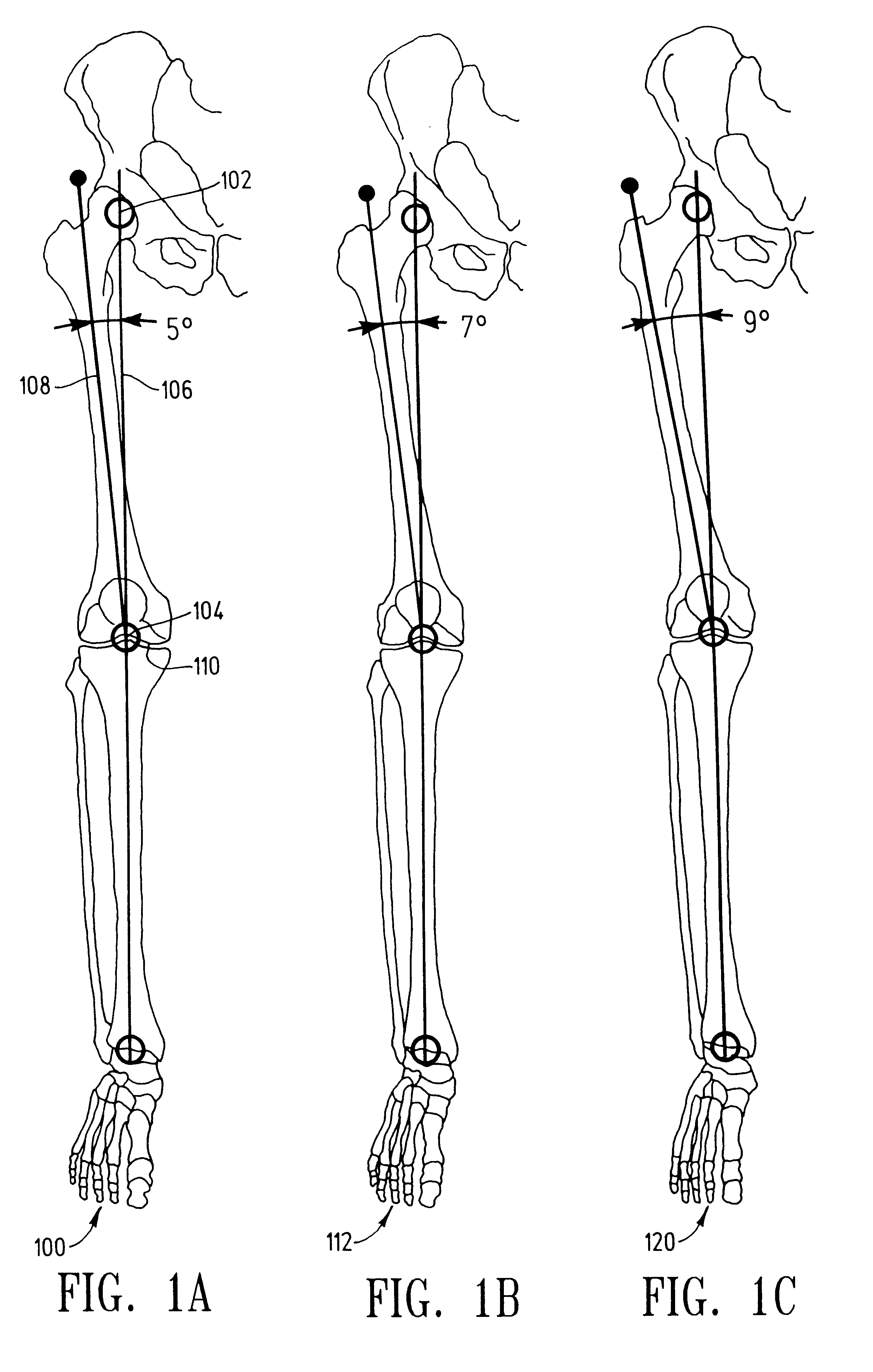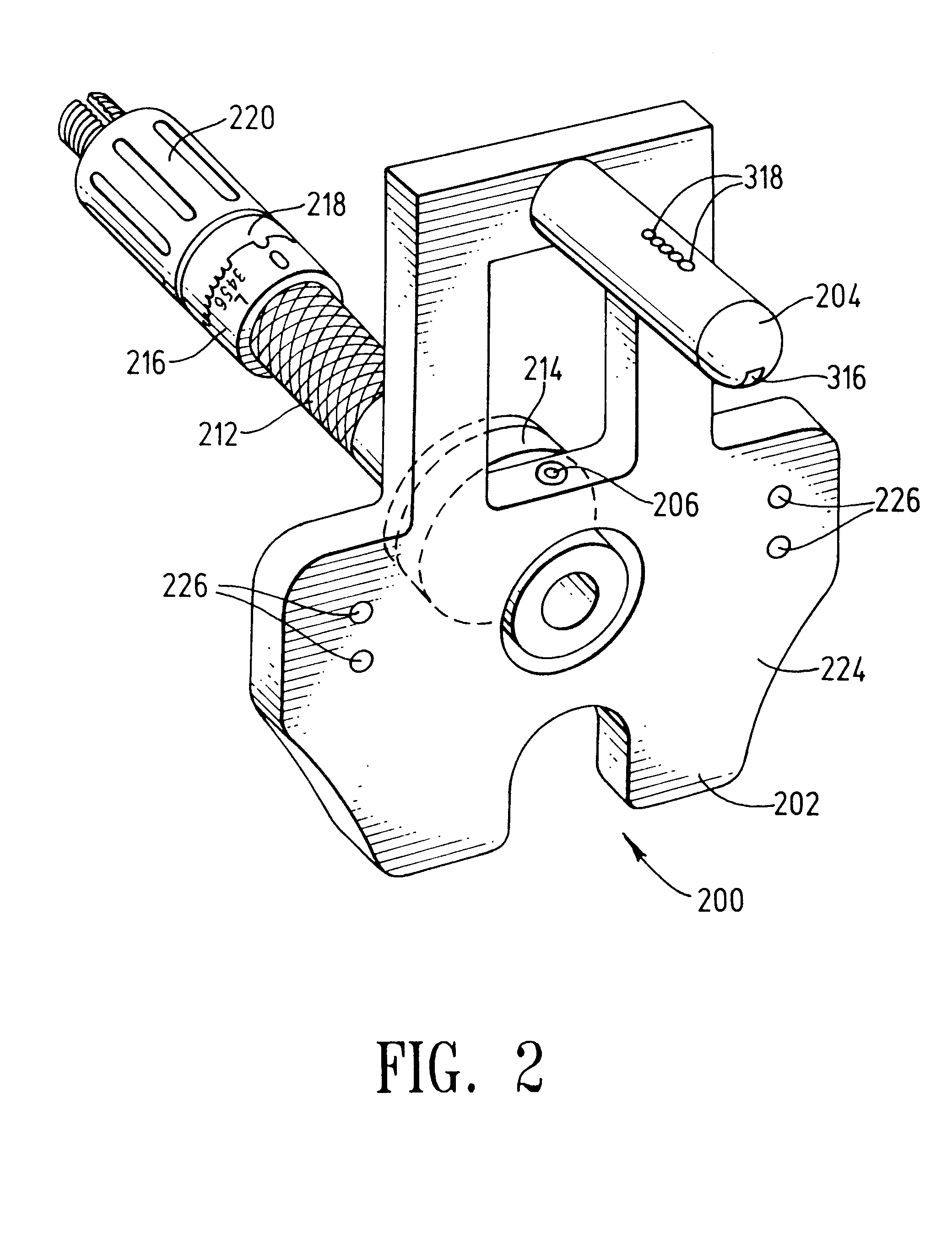Intramedullary alignment guide tool
a technology of intramedullary alignment and guide tool, which is applied in the field of improved intramedullary alignment guide and tool, can solve the problems of inconvenient use, inconvenient assembly, and inability to accurately represent the prosthetic alignment process of the tibia,
- Summary
- Abstract
- Description
- Claims
- Application Information
AI Technical Summary
Benefits of technology
Problems solved by technology
Method used
Image
Examples
Embodiment Construction
of the Intramedullary Alignment Guide
FIG. 2 shows a rear perspective view of the preferred embodiment 200 of the present intramedullary (IM) alignment guide. FIG. 3 shows an exploded view of the IM alignment guide of FIG. 2. Referring simultaneously to both FIGS. 2 and 3, the IM alignment guide 200 preferably comprises a base 202, a distal femoral resector attachment rod 204, a plurality of pivot pins 206, a cylindrical rocker unit 208, a plurality of displacement pins 210, an adjustment rod 212 having a base 214 and a top-facing interlock unit 216, an interlock ring 218, a locking knob 220, and a locking "C" ring 222. The IM alignment guide 200 preferably comprises surgical grade, bio-compatible materials, such as stainless steel, titanium, ceramic, structural plastics, etc. Preferably, the IM guide 200 is easily sterilized by known methods, such as heat sterilization, pressurized gas, and radiation sterilization methods. In the preferred embodiment, the base 202 is cut from a soli...
PUM
 Login to View More
Login to View More Abstract
Description
Claims
Application Information
 Login to View More
Login to View More - R&D
- Intellectual Property
- Life Sciences
- Materials
- Tech Scout
- Unparalleled Data Quality
- Higher Quality Content
- 60% Fewer Hallucinations
Browse by: Latest US Patents, China's latest patents, Technical Efficacy Thesaurus, Application Domain, Technology Topic, Popular Technical Reports.
© 2025 PatSnap. All rights reserved.Legal|Privacy policy|Modern Slavery Act Transparency Statement|Sitemap|About US| Contact US: help@patsnap.com



